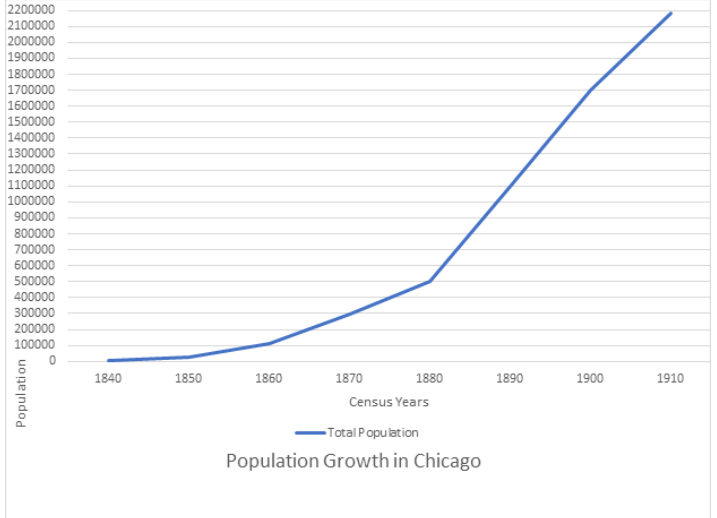Is Chicago's population story a tale of consistent growth, or a more complex narrative of ebb and flow? The Windy City's demographic evolution reveals a fascinating interplay of historical events, economic shifts, and societal changes, painting a dynamic picture of urban life.
Chicago, a city that has become a melting pot of cultures, has seen remarkable transformations over the years. From its humble beginnings to its status as a global metropolis, the city's population has been a key factor in its development. The latest data, as of 2025, paints a vivid picture of this ongoing evolution. The Chicago metropolitan area, a sprawling region that encompasses the city and its surrounding suburbs, is home to a significant portion of the population. The city of Chicago itself is the county seat of Cook County, a further indication of its central importance in the region.
In 2020, Chicago was home to over 2.7 million people, a figure that represented over 25% of the population of the Chicago metropolitan area, which was estimated to be approximately 9.6 million. This highlights the city's significance as a population center. The racial composition of the city in 2020 was diverse, with 29.2% identifying as Black, 35.9% as White, 7.0% as Asian, 0.1% as Native American or Alaska Native, 10.8% as belonging to two or more races, and 15.8% identifying as being from some other race. This diversity contributes to the city's unique character and cultural vibrancy.
The Chicago metropolitan area's population growth has been tracked extensively, with charts and tables illustrating the population level and growth rate from 1950 to 2025. Projections, including those from the United Nations, extend through the year 2035, providing insights into the city's future demographic trajectory. The current metro area population of Chicago in 2025 is estimated at 9,042,000, reflecting a 0.65% increase from 2024. The city of Chicago itself had a 2025 population of 2,611,867. However, as of 2025, the population of Chicago, Illinois, is approximately 2,746,388, representing a notable shift from previous years, according to data from the census.
The shifts in population not only affect the overall numbers but have wider repercussions. These demographic trends have a tangible impact on city planning, infrastructure development, and the overall cultural vibrancy of the region. Understanding the nuances of this dynamic landscape is essential for anyone seeking to grasp the essence of modern Chicago.
On March 13, 2025, reports highlighted the trends of population growth in the U.S., with metropolitan areas experiencing faster growth between 2023 and 2024 than the national average. This indicates a broader shift towards urban centers. Data from 2023, in Chicago, Illinois, showed a population of 2.71 million people, with a median age of 35.7 and a median household income of $75,134. Between 2022 and 2023, the population of Chicago declined slightly, from 2.72 million to 2.71 million, a decrease of -0.524%. However, the median household income increased from $71,673 to $75,134, a 4.83% increase. The trend of population movement within the city also revealed interesting patterns; for every 100 adults moving out of Chicago census tracts with median incomes above $62,000, 98 people moved in, while in areas with incomes below $62,000, just 81 people moved in.
Official sources like Quickfacts provide essential statistical information for all states and counties, including cities and towns with populations of 5,000 or more, allowing for detailed demographic analysis. The U.S. Census Bureau's most recent estimates show a slight increase in the population of the Chicago metropolitan area, with international immigration playing a key role. The growth in Chicago's population, alongside that of other cities, is not just about numbers but the diverse influences shaping the city's unique character and cultural landscape. The population growth has been influenced by a number of factors, including economic opportunities, cultural attractions, and historical events.
Chicago's growth story began with its incorporation in 1837, when the city had a founding population of a mere 4,000 residents. As the city evolved, innovations such as a dedicated railroad line and the availability of telegraph access spurred exponential population growth. By 1854, the population of Chicago had soared to over 30,000. The city's strategic location on the Great Lakes and its emergence as a vital transportation hub facilitated its rapid expansion. The influx of immigrants seeking economic opportunities further fueled the city's population boom.
This rapid expansion was not without its challenges. The book "The Slum and the Ghetto" explores the social and economic consequences of this rapid urbanization, offering insights into the lives of Chicago's residents. The city's growth reflects broader trends in urban development, with similar dynamics playing out in other regions. While the overall trend in metropolitan areas indicates an increase in population, some cities experience fluctuations.
To visualize the growth of Chicago, let's consider the following table illustrating the citys historical population trends.
| Year | Population | Notes |
|---|---|---|
| 1837 (Incorporation) | 4,000 | Founding population. |
| 1854 | 30,000+ | Rapid growth spurred by transportation and innovation. |
| 2020 | 2.7 million | Accounts for 25% of the Chicago metropolitan area. |
| 2023 | 2.71 million | Median age 35.7, median household income $75,134. |
| 2024 | 9,042,000 (metro area) | 0.65% increase from the previous year. |
| 2025 | 2,611,867 (city) | |
| 2025 | 2,746,388 (city) | Approximate figure based on census data. |


